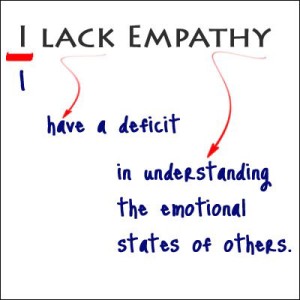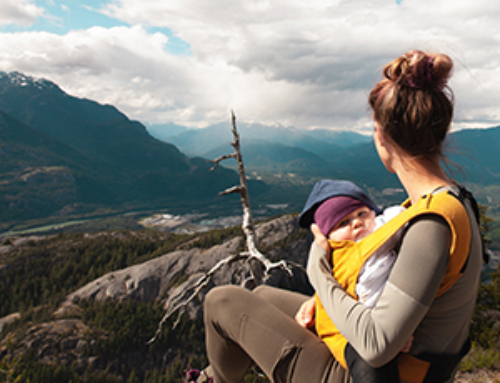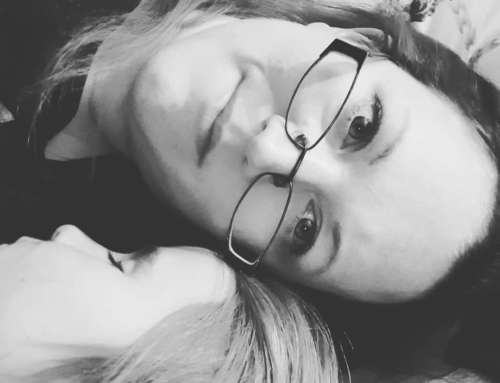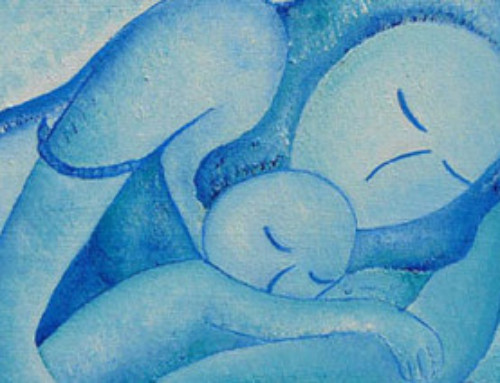By Tracy G. Cassels
 I don’t believe I have ever met an individual who didn’t want their child to grow up to be empathic. It’s just standard for parents to want their children to care about others’ well-being and put that care into practice. We spend ample time discussing with other parents how to do this, we read books, we start programs in schools, we model the behaviours we want – in short, we do a lot to try and ensure our children are empathic. And yet, there is one thing I see happen with alarming regularity in our young toddlers that sabotages so much of what we are aiming for.
I don’t believe I have ever met an individual who didn’t want their child to grow up to be empathic. It’s just standard for parents to want their children to care about others’ well-being and put that care into practice. We spend ample time discussing with other parents how to do this, we read books, we start programs in schools, we model the behaviours we want – in short, we do a lot to try and ensure our children are empathic. And yet, there is one thing I see happen with alarming regularity in our young toddlers that sabotages so much of what we are aiming for.
Imagine, if you will, a two-year old child at the playground who is playing by himself who suddenly sees a girl fall off the swing and start to cry. The child, who is born with at least some innate capacity for empathy, shows signs of emotion contagion, looking anxious and upset himself, and asks his mom, “Is she okay?” The mother, seeing the negative emotions creeping up on her son’s face as he looks worried, scared, and like he might start to cry himself, does what she can to stop this from happening.
“She’s fine sweetheart. Don’t worry.”
And boom! The sabotage is done. The boy is slightly confused, but trusts his mother, gives one last glance at the girl, and then continues playing without a second thought. Mom is relieved not to have to deal with an upset child herself – not just for herself but for her son as well because what parent wants their child to be sad?
But what has actually happened here? In five words, this mother has managed to send the most anti-empathic message she could. She has said the girl’s sadness doesn’t matter. In fact, even worse, she’s suggested the display of sadness – which we are hardwired to notice and react to – isn’t sadness.
Young children are incredibly curious about emotions. They don’t always understand what causes emotions in others (this involves areas of the brain not quite developed) but they are wonderful at picking up on even the most nuanced of emotions in their own caregivers and more obvious emotional changes in other children. They want to understand them and they need us to help them understand. The problem is that we seem to have decided they aren’t “old enough” to process or understand these things and we must “protect” them. And by protect them, we mean we tell them everything is fine.
So the child, who has seen the girl crying, has felt that emotion contagion himself and feels some level of personal distress, and has asked if everything is okay (because his reaction tells him it’s not, but he still doesn’t know enough about the world), has now has his whole experience negated. He has been told that a crying child is “fine” and that he need not “worry” about his own anxiety in these situations and can ignore it in favour of other activities. In short, “hush hush little one”.
***
Fast forward a few months (of which the comment “s/he’s fine” has been said repeatedly) and the boy is playing with another child and he grabs a toy out of child’s hand and hits the boy with his other hand. The other boy starts to cry. Only this time the boy doesn’t seem at all distressed by the sadness being displayed by his peer. Why is that? Well, of course part of it is to do with the fact that the child got the toy he wanted (and for some kids this will be all it is if they are so focused on the toy, particularly younger children), but part is very likely that the child no longer sees the crying child as someone who is in pain. Though it should resonate as the child knows his own tears as pain, but he has been taught that others are somehow different because when they cry, they are “fine”.
But now mom says, “Look what you did! That’s not nice at all! Give the toy to me, you can’t play with it if you’re going to grab it and hurt other kids! How would you like it if he did that to you?”
For the first time in a while, the child now has to accept that the tears the other child displays are indicative of pain. But why? How is this child any different? He knows he wouldn’t like it if the other child did it to him, but his cries mean sadness. And hasn’t mom always said other people crying aren’t upset? They’re fine? I don’t need to worry?
One conclusion he can come to is that it’s his fault. If he hurts people, they are in pain, but otherwise not. But he’s not hurting people intentionally… he just really wanted the car! He won’t be able to stop this behaviour before it starts and understand why he shouldn’t hit for a couple more years. Years of confusion where some children cry because he hurt them and some children cry when they are fine. And only he seems to get in trouble for making someone cry.
***
The same boy enters kindergarten and has no idea what emotions truly look like. He can say that crying means sadness, but he doesn’t emotionally understand it. When the teacher starts to teach about how we comfort people who are upset, it doesn’t resonate because he still can’t comprehend how to differentiate the people that are crying because they’re upset and the people who are crying because they’re fine. And he knows those people are still there because if he points it out to mom and dad, they still always say others are “fine” – including themselves. So every time a child cries, he freezes. It’s not that he doesn’t care – he does! – but he’s so crippled with anxiety about what to do that he does nothing.
Teachers don’t say much because it seems most kids these days behave this way. Mom and dad don’t do much because they see his care, they see the way he looks at the child in distress and mistake his anxiety for sympathy. So they don’t help him. With time, he may learn to deal with his own personal distress, leaving him staring, unemotional, at a younger child crying. Unaware of how to respond and unsure what to do even if he did recognize the pain in the crying, he loses his ability to connect with others on that deeper level.
***
Will he function in our society? Absolutely. Will he even look that different? Unfortunately probably not. Far too many children today struggle with empathy that he won’t look any different, perhaps a bit on the lower empathy side than normal, but it’s a normal curve right? The problem is that our behaviour as parents is shifting this normal curve to a skewed one. One where far too many children are bunching up at the bottom.
What can you do or say instead of this? Well, be honest. Is the person fine? No, but they probably will be fine with some love and compassion. And if your child is highly sensitive, they will cry when they see others upset and that’s okay. That’s when you get the amazing opportunity to model the empathic behaviour you hope to see in your own children. Because if we decide that we will only cherry pick examples of sadness for our children to accept and learn from, we do nothing but confuse them, or worse, teach them that only some people’s expressions and experiences of sadness matter while others’ don’t. We can’t expect our children to develop empathy without first having a good, solid understanding of emotions and how to recognize them. Once they can recognize emotions in others, they can start to learn to differentiate their own emotions about what they are witnessing from what the other person is experiencing. They move from feeling personal distress to sympathy or empathy. And only then do we have the opportunity for a truly empathic child.
But it all starts young. And it starts with you.






Excellent read! Not being able to experience empathy can have some disastrous effects. I imagine it would be pretty difficult to commit a crime or hurt another person with a well-developed sense of empathy. And while I was reading, I couldn’t help but think of the Kitty Genovese story and wonder the effect of empathy on the bystander effect.
Oh, very timely! Just yesterday my daughter in swim class pointed over at another girl (they’re ~16months) who had started crying and signed “help”. I told her that the other girl was with her Mum and so probably didn’t need our help. I hope that was okay!
I’ll try to keep in mind acknowledging other people’s unhappiness in the future.
Interesting read. Have you any studies on developing empathy to reference as well?
I used to cry as a child when I saw others upset, and was often scolded for it and told not to cry, nothing was wrong with ME personally (scolded from a very loving place, though, not a harsh place per se). I never even considered that it might have not been the best way to deal with it on my caregivers behalf: however I will admit these days to having some difficulties with empathy. I often find it very hard to feel bad for others when they are sick or hurting, not in a mean way, it’s just NOT THERE. I don’t feel anything. So this is one thing I will be mindful of with my own daughter! It’s something I am working on with my PND counsellor. 🙂
Interesting read, thanks!
Those looking for more info on empathy, I HIGHLY recommend, Born For Love: Why Empathy is Essential–and Endangered by Dr Bruce Perry and Maia Szalavitz. Really eye opening book!!